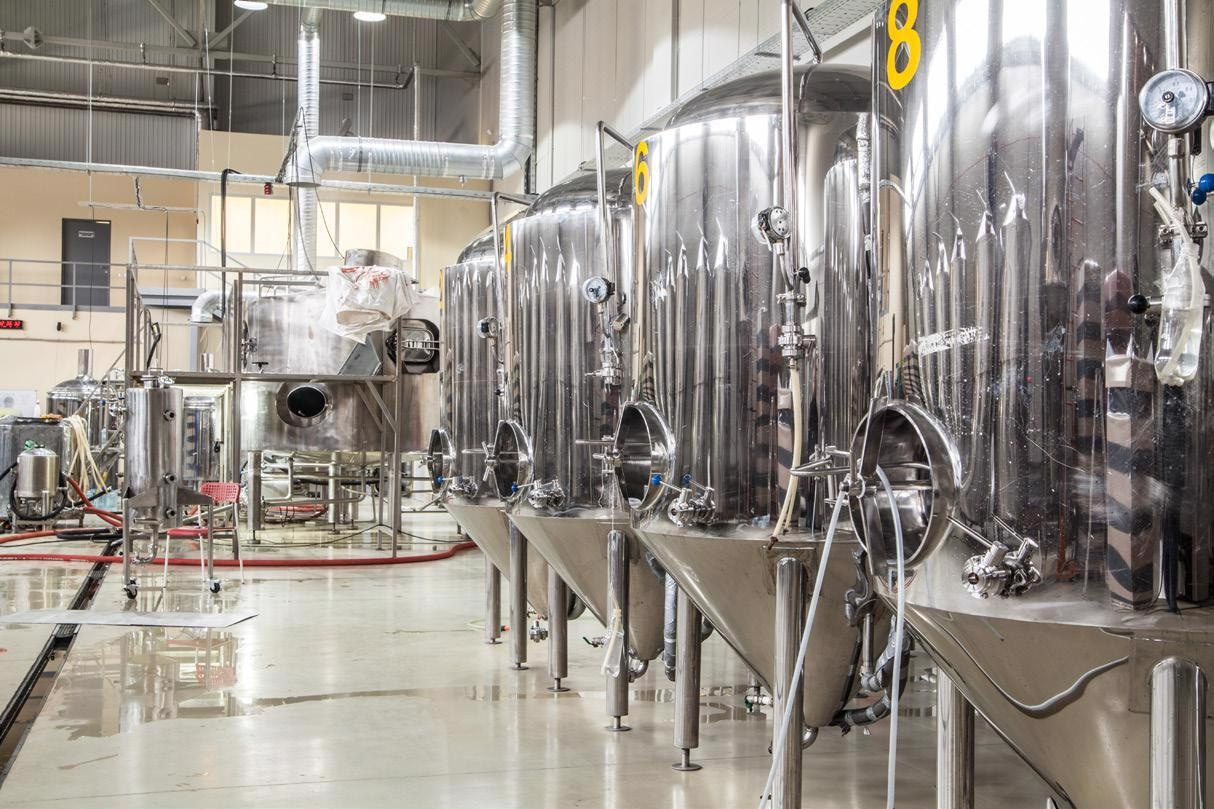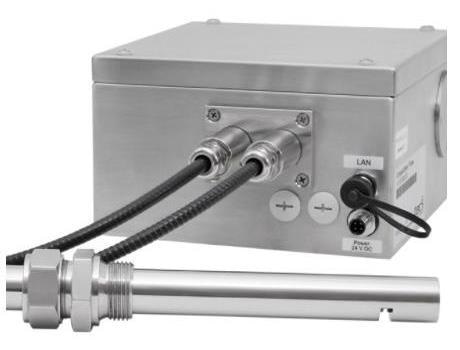The process of beer-brewing has traditionally been considered an art form. Since the entire beer market reached a valuation of $116.0 billion in 2019, there has been an increase in the demand for quality and consistency in the craft brewing industry. Scientific analysis is now a key component of the fermentation process.

Image Credit: tec5USA Inc
During the brewing process, the four ingredients used for production – water, hops, malt and yeast – all play a crucial role. The alpha and beta-amylase in the malt are activated by the mashing of the malt and water, which then breaks down long and short chain sugars, respectively.
These sugars have distinct roles – the long chain sugars control the body and mouthfeel of the product, while the short chain sugars control the alcohol production. To produce the desired flavor and aroma, hops are then added to this mixture prior to the yeast conversion of the sugars into ethanol and carbon dioxide via fermentation.
It is said that dry hopping preserves the hop oils and adds more flavor and aroma without added bitterness. Throughout the dry hopping process, hops are introduced either at the beginning of fermentation or, later on, deep into the fermentation process.
Historically, any modifications to the beer recipe would only be allowed once the Brew Master had tasted the finished product and according to their verdict, the hops components could then be adjusted.
By comparing the original gravity (sugar content before fermentation) and the final gravity (sugar content after fermentation), the alcohol content would then be calculated to establish the alcohol by volume (ABV).
Near-Infrared spectroscopy (NIRS) enables a simple, efficient and cost-effective solution to monitor key parameters, including hops components or alcohol concentration. Real-time, inline monitoring allows better control over the production process and, consequently, the quality and flavor of the finished product.
Hops Components and Alcohol Content are Key Parameters
While quality control still currently focuses on the key elements of hops components and alcohol content, these assessments are frequently made utilizing high performance liquid chromatography (HPLC), which offers very precise and accurate data.
However, this analysis demands time-consuming sample preparation and is not always conducted in-house, so it can take hours, even days, to acquire results.
This long winded process can result in out-of-spec batches that need to be reprocessed as well as causing a reducing efficiency. In addition, a highly skilled operator is required for a process that produces hazardous waste, adding more cost to the quality control process as special disposal of these materials is required.
NIRS offers several benefits; it offers real-time analysis, is non-destructive, requires little to no sample preparation and does not produce waste products. NIRS is also a multivariate method, supplying information about numerous analytes in a single spectrum.
This allows brewers to characterize every aspect of the hop’s components – alpha- and beta-acids, hydrocarbons, essential oils and flavonoids – and establishes the alcohol content with just a single instrument.
tec5USA Inline Rapid Spectroscopy
Laboratory-based near-infrared (NIR) spectrometers tend to be cumbersome and provide complete analysis for a wide variety of compounds. While these features facilitate in-depth scientific research, they are not well-suited for integration into industrial manufacturing processes.

tec5USA CNIRS in a stainless-steel enclosure. Image Credit: tec5USA Inc
tec5USA’s compact near-infrared spectrometers (CNIRS) have a small footprint, roughly the size of a laptop and can be easily integrated into the brewing production line. Their micro-electromechanical system (MEMS) device enables the mechanical structures to be miniaturized and incorporated with electrical circuitry.
These instruments are also fitted with a Fabry-Perot interferometer allowing tunable and variable wavelength ranges between 1.10–2.50 µm with a high signal-to-noise ratio (>10,000) to guarantee precise data is recorded accurately.
Additionally, they are manufactured with robust optics and electronics and have limited moving parts to ensure they are rugged enough to withstand 24/7 operation.
By positioning a CNIRS in the downstream piping or in the circulation loops after the dosing pumps, it can analyze the hops components and establish the ethanol content.
The CNIRS, with tecSaaS embedded electronics, communicates remotely to the production line software while acting as a real-time sensor to adjust the machinery hardware as necessary.
For instance, real-time monitoring of hops components while recirculating the beer throughout fermentation enables control systems to automate hops additions. The system can activate injections from the dosing pump until the desired set point is reached, predicated on the concentration of the hops components.
Automated Beer Fermentation with Product Consistency
This state-of-the-art, inline technology provides many benefits where the current methods fail; it offers real-time quality control, is non-destructive with no waste.
What’s more, it has the capacity to automatedly monitor the fermentation steps while improving product consistency and presents cost savings due to the limited requirement for reprocessing, as well as on time, energy and reagent costs of conventional laboratory measurements.
All in all, these latest advances in the beer fermentation process allow brewers to offer their characteristic flavor and aroma for the consumer to enjoy.
About tec5USA
Part of the publicly traded company Nynomic AG, tec5USA is the North American subsidiary of tec5 AG. The group is an international leader in the manufacturer of products for permanent, non-contact and non-destructive optical measurement technology.
Rather than holding out for time-intensive laboratory measurements, tec5USA's instruments measure time-critical chemical and physical parameters rapidly to react promptly to variations in the production line, permitting process verification in real-time.
This facilitates consistent quality, rework reduction and waste minimization, end-to-end supply chain optimization, yield maximization and pay per content.
The industries that tec5USA serves include semiconductor manufacturing equipment, thin film technology, environmental technology, the mining industry, chemistry, petrochemistry, biotechnology and pharma, food, feed and beverages as well as agriculture.
References
- Brewersassociation.org. (2020). National Beer Sales and Production Data. https://www.brewersassociation.org/statistics-and-data/national-beer-stats/
- tec5USA. (2020). Identify Hops Components in Beer Fermentation Process.
- Redwine J., et al. (2020). Determination of alpha- and Beta-acid Concentrations in Type90 Hop Pellets by Near Infrared (NIR) Spectroscopy and Chemometric Analysis. World Brewing Congress. https://www.mbaa.com/meetings/archive/2016/Proceedings/Pages/091.aspx
- Lai A., et al. (2017). Rapid Testing Methods for Beer Analysis Using Infrared Spectrometry and Quality Trait Analysis. American Society of Brewing Chemists. https://www.asbcnet.org/events/archives/2017ASBCMeeting/proceedings/Pages/49.aspx
- Vann L., et al. (2017). The Application of Near Infrared Spectroscopy in Beer Fermentation for Online Monitoring of Critical Process Parameters and Their Integration into a Novel Feedforward Control Strategy. Journal of the Institute of Brewing. https://doi.org/10.1002/jib.440.
- tec5USA.com. (2020). Embedded Spectroscopy. Spectrometer as a Sensor. https:// www.tec5usa.com/embedded-spectroscopy
- tec5USA. (2020). Compact Near Infrared Spectrometer (CNIRS).

This information has been sourced, reviewed and adapted from materials provided by tec5USA Inc.
For more information on this source, please visit tec5USA Inc.